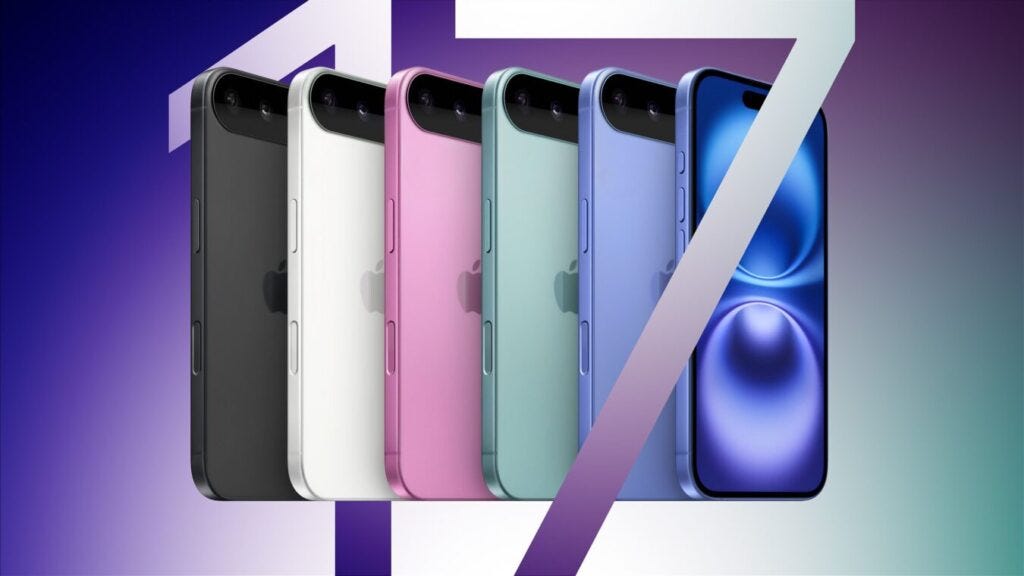Apple Hints at iPhone 17 Models Lacking SIM Card Slot in More Countries
As the tech world eagerly anticipates Apple’s September 9, 2025 “Awe Dropping” event, a bold shift is on the horizon. Apple appears poised to expand its eSIM-only strategy for the new iPhone 17 series potentially eliminating physical SIM card slots in more countries beyond just the U.S. This article explores what that change means, why it’s happening, and how it may impact users worldwide.
Why Apple Is Moving Toward eSIM-Only iPhones
Apple started phasing out physical SIM card trays in the U.S. with the iPhone 14, requiring users to adopt eSIMs. Now, reports suggest this trend may be widening. MacRumors shares that Apple Authorized Resellers across the EU have been instructed to complete eSIM training via its SEED app by September 5. This training ahead of the iPhone 17 launch indicates real preparations for a global rollout.
The ultra-thin iPhone 17 Air model, expected to measure a mere 5.5 to 5.6 mm at its thinnest, is particularly affected. Its slim design necessitates safety trade-offs, one of which is the removal of the SIM tray. Apple itself is previewing this shift, signaling a phase that could redefine how phones connect to cellular networks.

What the iPhone 17 Lineup Might Look Like
iPhone 17 Air
This appears to be the pioneer of the eSIM-only era outside the U.S. With a paper-thin design and cutting-edge internals, this model may ship without a SIM slot in most countries. Apple’s reasoning is practical: freed-up internal space allows for sleeker construction and enhanced components.
iPhone 17, 17 Pro & Pro Max
While the Air is expected to lead the charge, the mainstream iPhone 17 models remain uncertain. Rumors suggest a “two-track” global strategy: the Pro variants may still include SIM trays in certain regions, particularly where eSIM adoption is low. In contrast, international expansion of eSIM-only models suggests the shift could be broader-but incremental.
What This Means for Consumers
Pros of Going eSIM-Only
- Enhanced security: eSIMs cannot be physically removed or stolen, making them more secure.
- Convenience for travelers: Users can store up to eight eSIMs on a single device without juggling physical cards.
- Sleek design potential: Removing the tray enables thinner, lighter device profiles, as seen with the iPhone 17 Air.
Challenges to Consider
Adoption readiness: In countries where carriers and customers are unfamiliar with eSIMs, transitioning could be confusing or restrictive.
Regional limitations: Some markets, such as China, still require physical SIM support due to local regulations.
What’s Next?
All signs point to Apple announcing the iPhone 17 lineup-including the potentially eSIM-only iPhone 17 Air-on September 9, 2025 With global eSIM pushhots intensifying (as seen with Google’s Pixel 10 in the U.S.), this year may mark the start of a broader transition away from physical SIM cards.
Final Thoughts
Apple’s move toward eSIM-only iPhones is not just a rumor anymore-it’s a future that’s already shaping global smartphone use. With the possibility of the iPhone 17 lineup dropping physical SIM slots in more countries, users should start preparing now by learning how eSIMs work and checking with their carriers for compatibility.
While this change might feel big, it also opens doors to better connectivity, sleeker designs, and global convenience. If history tells us anything, once Apple sets a standard, the rest of the industry usually follows.
👉 Want more updates, insights, and the latest news about Apple, AI, gadgets, and the future of tech?
Visit TechySpeed.com. your go-to hub for everything trending in technology.
FAQs
Q1: Why is Apple dropping physical SIM trays in more countries?
Apple’s shift is driven by design efficiency and forward-looking tech trends. eSIMs offer superior security, eliminate the need for fragile physical slots, and free up internal space-key to creating thinner, more powerful devices like the iPhone 17 Air.
Q2: Will all iPhone 17 models lack a SIM slot globally?
Not yet. While the iPhone 17 Air is strongly expected to be eSIM-only in most regions, the iPhone 17, Pro, and Pro Max might still offer physical SIM tray options in select countries. Apple appears to be pacing the shift by region and model.
Q3: What do consumers in countries without eSIM support need to know?
If your region lacks eSIM infrastructure, Apple may still offer models with SIM trays, or release different variants. It’s prudent to wait for the official announcement on September 9 or consult your carrier for compatibility details.
Comments
Post a Comment